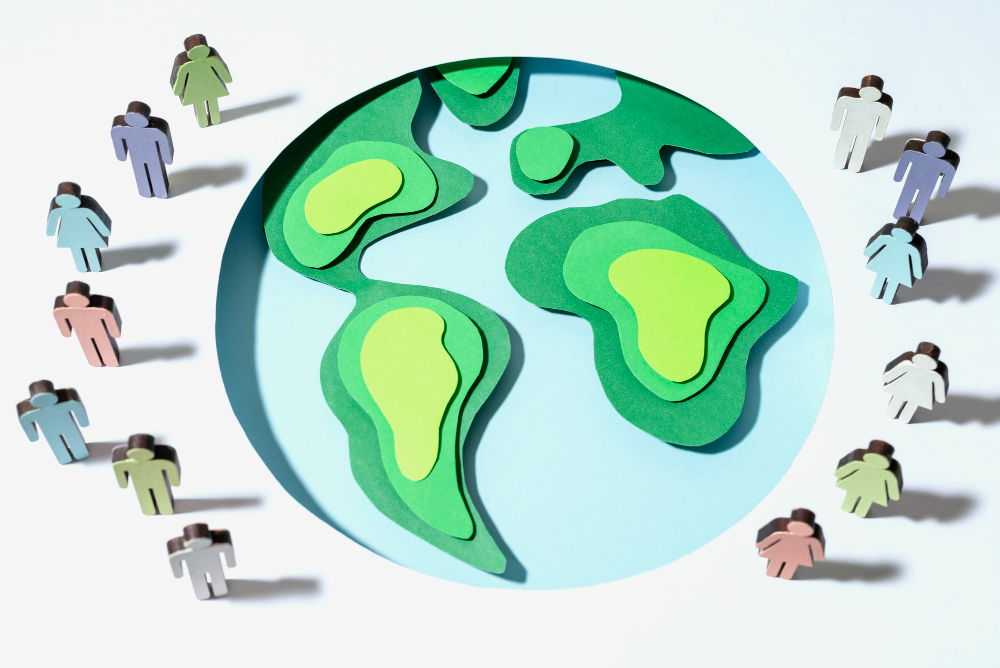|
|
According to the UN, the world population surpassed 8 billion on November 15, 2022. Such a rapid rise (from 7 billion in 2011) is largely attributed to advances in healthcare, access to resources, and high fertility rates in certain parts of the world.
However, while longer lifespans and advances in medicine are certainly to be celebrated, the sheer number of people living on Earth has caused complications.
From environmental consequences to resource scarcity, it is clear that the Earth’s population growth must be addressed. Understanding why this growth has been so rapid and where it will lead in the future requires an examination of some key factors affecting population trends.
This article will explore the variables that are contributing to Earth’s population growth.
Source: https://worldpopulationreview.com
Key Takeaways:
- The world population surpassed 8 billion people in November 2022, largely due to advances in healthcare, access to resources, and high fertility rates in some parts of the world.
- Global population growth rates have been slowing down since peaking in 1968, but fertility and birth rates remain high in some regions, especially in Sub-Saharan Africa, due to socio-economic factors such as lack of access to education and healthcare and cultural preferences for larger families.
- Life expectancy has been increasing globally, but there is still a significant disparity between countries.
- Migration is a complex factor affecting global population growth, with many reasons for people to move from one place to another, such as economic opportunity, political/religious freedom, and refugee crises.
- Earth’s population growth has both positive and negative implications, including economic development, higher tax revenues, resource scarcity, environmental degradation, increased poverty and inequality, and social unrest.
- Any successful strategy in addressing Earth’s population growth must include economic opportunity, access to healthcare and education, and improved migration policies tailored to the needs of each locality.
Population Growth Rate
The population growth rate is the percentage change in population over a given period of time. It’s typically measured annually. It is calculated by subtracting the previous year’s population from the current one and then dividing it by that same figure:
(Current Population – Previous Population) / Previous Population x 100 = % Change.
Overall, global population growth rates have been slowing down since peaking in 1968, when they reached 2.1%. Today, they stand at around 1%. However, fertility and birth rates remain high in some parts of the world due to the socio-economic factors discussed below.
Fertility/Birth Rate
The fertility rate measures the average number of children per woman in a given population. A country with 20 births per 1000 people has a birth rate of 2% – (20/1000) x 100.
A similar factor is the birth rate – the number of live births per year per 1,000 people (as seen in the chart below).
Worldwide, fertility rates have been decreasing over the past few decades as access to contraception and family planning has increased.
However, some regions, such as Sub-Saharan Africa, still maintain high fertility rates due to socio-economic factors. In these places, there is often a lack of access to education and healthcare (thus contraception) and/or a cultural preference for larger families.
A low fertility rate can lead to an aging population and a decrease in the working-age population, affecting economic growth.
Conversely, extremely high fertility rates will result in rapid population growth, which may carry its own set of implications if not addressed, such as increased resource strain and environmental degradation.
Life Expectancy
Life expectancy is the average number of years a person from a given population can expect to live. This is mainly determined by access to healthcare, nutrition, and sanitation, as well as genetic makeup and lifestyle choices.
Generally, life expectancy has been increasing globally over the past few decades, meaning more people are living longer. However, there is still a massive disparity between the life expectancies of different countries.
For example, in 2019, Japan had the highest life expectancy of nearly 85. Countries like Australia, Spain, and Italy were nearing 83. On the other hand, there are places with life expectancies in the 50s, such as Somalia and South Sudan.
Access to healthcare and nutrition in countries with shorter life expectancies is often severely limited, resulting in higher mortality rates.
On the other hand, some countries with high life expectancies are reaching a demographic tipping point where the population is aging more rapidly than it can be replenished by births.
Both scenarios can lead to population pressures and an imbalance in the ratio of working-age people versus retired or elderly individuals.
Migrations
Migration is a complex factor that affects many aspects of our world. It refers to the movement of people from one place to another.
It’s considered to have a significant influence on global population growth, which is not surprising, considering that, in 2020, there were 281 million people living in a country other than the one of their birth.
The Net Immigration Rate is the difference between the number of immigrants and emigrants in a given country over a period of time, typically measured annually.
People move for many reasons, including economic opportunity and political/religious freedom. Refugees often flee their countries due to conflict and persecution.
As such, when populations migrate, they can significantly influence the makeup of another region’s population. They also gain access to better healthcare and education for themselves and/or their children.
In recent years there has been increased debate regarding immigration policies worldwide as more countries attempt to address issues arising from migrations into their territories (such as language barriers or cultural differences).
In addition, migration can further strain resource availability and cause environmental damage if not managed properly. Therefore, nations must actively manage their borders while recognizing the rights of those attempting entry into better lives elsewhere.
Population Growth Effects
Earth’s population growth has many implications, both positive and negative.
Possible Positive Effects
Rapid population growth can have positive effects on economic growth.
- As the population grows, there is an increase in the number of consumers of goods and services. This leads to a rise in demand, production, and employment opportunities.
- A larger labor force can lead to increased productivity, higher profits for businesses, and higher tax revenues for governments.
- With more people paying taxes, governments have more resources to invest in public goods and services, such as infrastructure, education, and healthcare. This can result in improvements in the quality of life for citizens, contributing to economic growth.
Possible Negative Effects
Rapid population growth can have negative effects on resource availability and environmental sustainability.
- Poor management can increase poverty and inequality, and social dissatisfaction.
- Governments may struggle to keep up with infrastructure needs, exacerbating the problem.
- Resource scarcity, such as water scarcity, can further damage the environment.
- Failure to address these issues can result in the displacement of people, loss of biodiversity, and long-term environmental damage.
- If poverty and inequality are not addressed, it can lead to further unrest, destabilizing society. In extreme cases, chronic resource scarcity can result in social conflict, leading to forced migration, refugee crises, and loss of life.
Conclusion
Earth’s population growth is an issue that requires a multifaceted approach. Different countries will experience different challenges based on their own socio-economic and political contexts, and so solutions must be tailored to the needs of each locality.
It is clear, however, that economic opportunity, access to healthcare and education as well as improved migration policies are all essential components of any successful strategy in addressing Earth’s population growth. It is vital to remember that it’s not the planet that’s overpopulated, but rather certain parts of the world, and thus different areas will require distinct solutions.
By understanding the factors driving growth, we can move towards an equitable and sustainable population trajectory that supports our planet.













No Comments